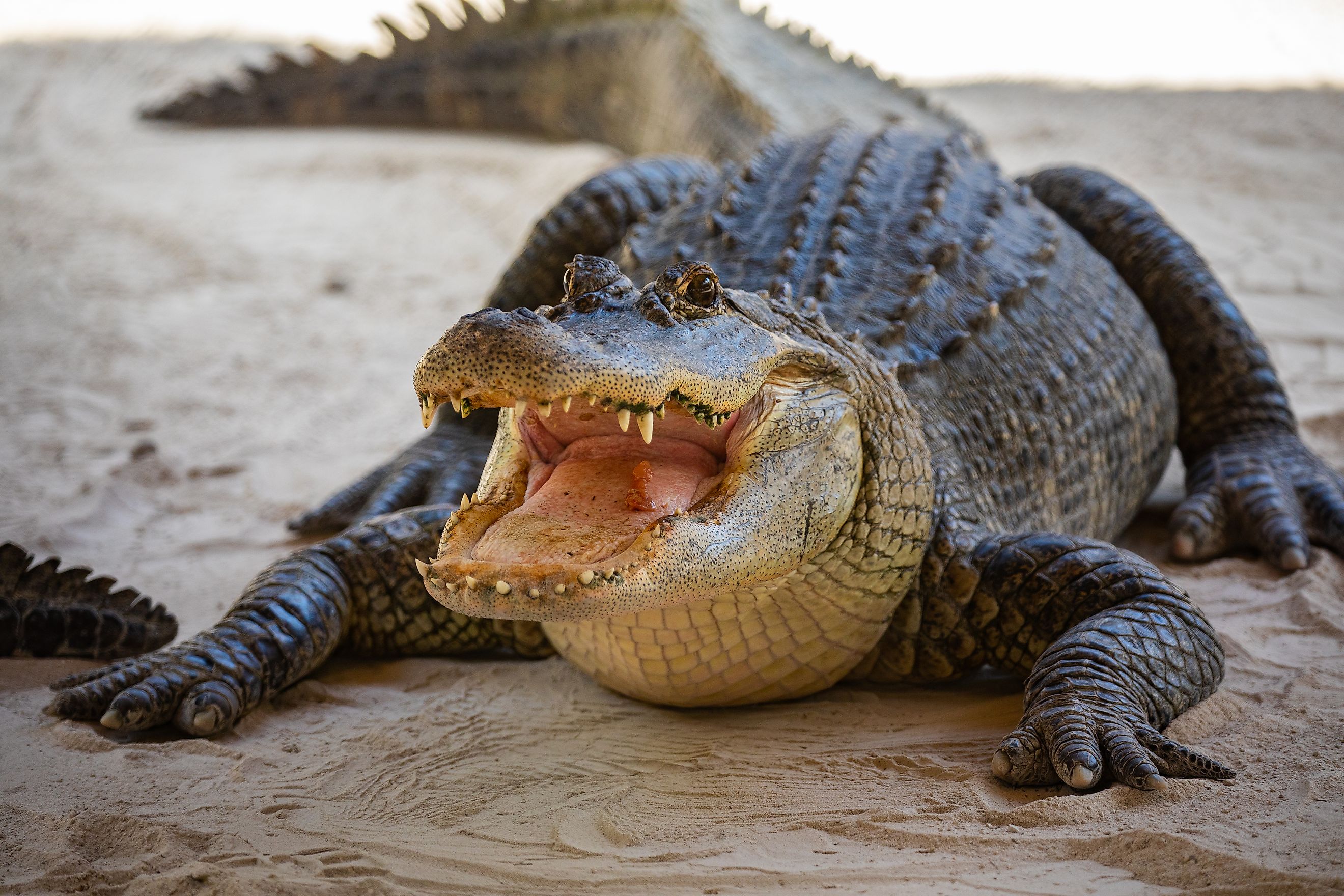
The 12 Deadliest Animals in Texas
Every state has its share of deadly animals, whether it be venomous snakes and spiders, or larger critters known for seeing you as a threat or prey. These possibly fatal wound-inflicting creatures can be found on land and in the water, and since Texas is located on the Gulf of Mexico, dangerous ocean life is a risk. And while not all of these animals are deadly to humans, or very rarely cause an issue for us, they can be the primary hunters of livestock and domesticated animals like dogs and cats. So whether you're looking to visit Texas, or live there, you should familiarize yourself with these deadly animals so you can be prepared should an issue arise.
Portuguese Man-O-War
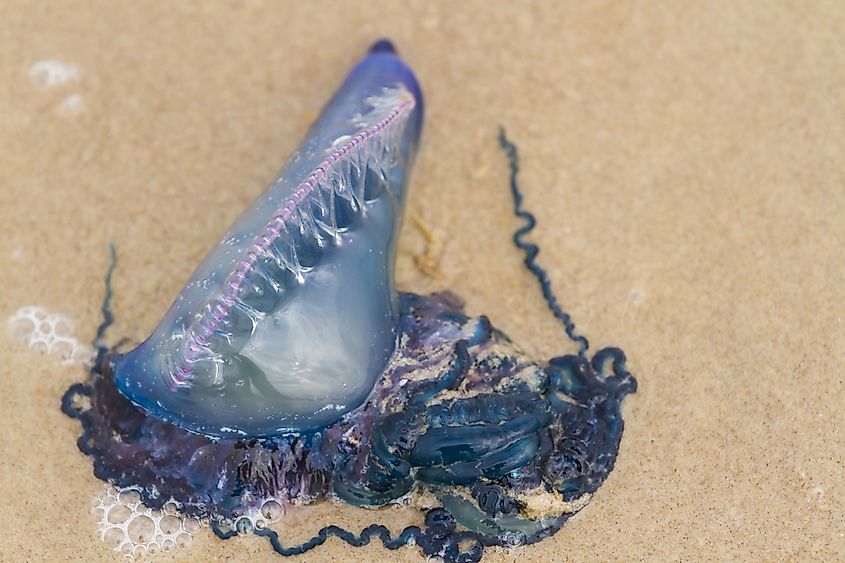
Found in warmer areas of the ocean, especially in the gulfs of the Atlantic, the Portuguese Man-O-War got its name due to its resemblance to 15th-century warships in Portugal. This creature is similar to a jellyfish and is often confused with one. Its defining characteristic is its pneumatophore, the gas-filled bladder top-end of it, that is seen floating above water. This part serves as both a floatation device, and a means of transportation, working like a sail to help it float along the ocean's current. Under this, long tentacles extend downwards, and these are what to watch out for. Due to its reliance on the ocean to move, the Portuguese Man-O-War can wash up on the shore, sometimes in large numbers, where it is more likely to come into contact with humans.
If stung, expect painful, red blisters and welts. Other symptoms can include fever, shock, and heart and lung complications. Death can be caused by either an allergic reaction or by cardiovascular events.
Another important fact to keep in mind is that even if the Portuguese-Man-O-War has washed up on shore and has been left alone for days, it can still sting. Its detached tentacles if left on other creatures or debris can also still cause harm. So it's best to just steer clear of anything that might look like a jellyfish.
Southern Black Widow
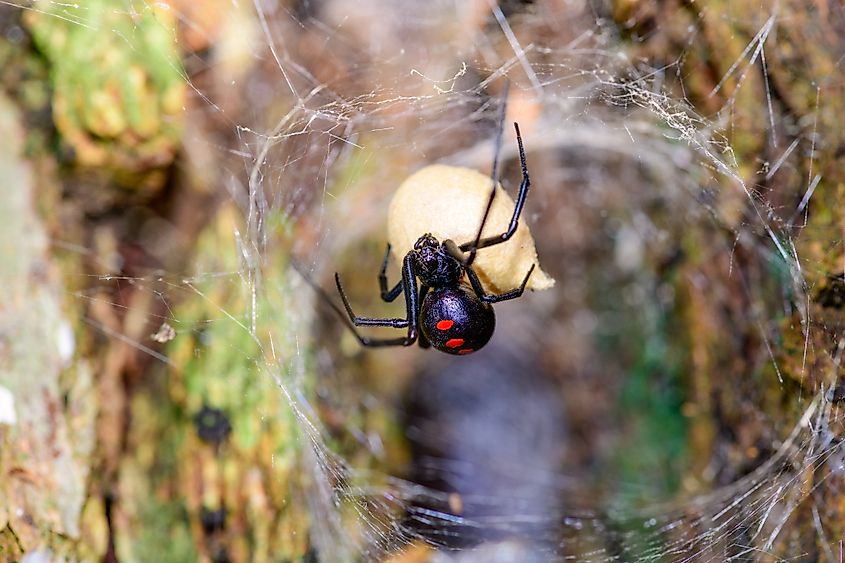
The Southern Black Widow is part of the black widow family, with its relatives including the northern and western black widow spiders. These black widows are known for their bright red, hourglass markings. The females are the biggest risk to humans and are characterized by their round bodies. Though black widows don't usually bite for no reason, they are territorial and rely on self-defense as their protection. Run-ins with these creatures are largely due to coming into contact with their web, or their hiding spot.
Their venom, known as alpha-latrotoxican, can cause severe muscle pain, stiffness, and spasms. Other symptoms include headaches, breathing issues, and nausea. Pregnant women are advised to seek medical help right away due to the stress these bites can put on expecting mothers. Complications from these bites can also cause cellulitis, a serious, bacterial skin infection. It is advised to always seek medical attention if bitten.
Brown Recluse

The brown recluse is another venomous spider that loves to hide in dark, hidden areas. These spiders mind their own business and avoid human interaction as much as possible. Run-ins with these animals are due to accidentally stumbling onto their hiding spot, or coming into contact with them either by pressing against them while in bed or in a chair.
Their bites are oftentimes painless, or not strong enough to easily notice unless you see it happen. This is why they can be dangerous. You won't start to feel many symptoms until a few hours later when you will start to notice redness and possible swelling around the bite site. Other symptoms include tenderness, a burning sensation, joint pain, and fever-like symptoms like chills, weakness, and increased temperature. Complications of these bites can include large, necrotic skin lesions that destroy surrounding tissue, infection, and scarring.
Brown recluse spiders are often confused with other spider types, like wolf spiders and hobo spiders. One way to recognize a brown recluse is by its six eyes, which isn't the norm, as well as the dark, violin-like markings on its back.
Western Cottonmouth
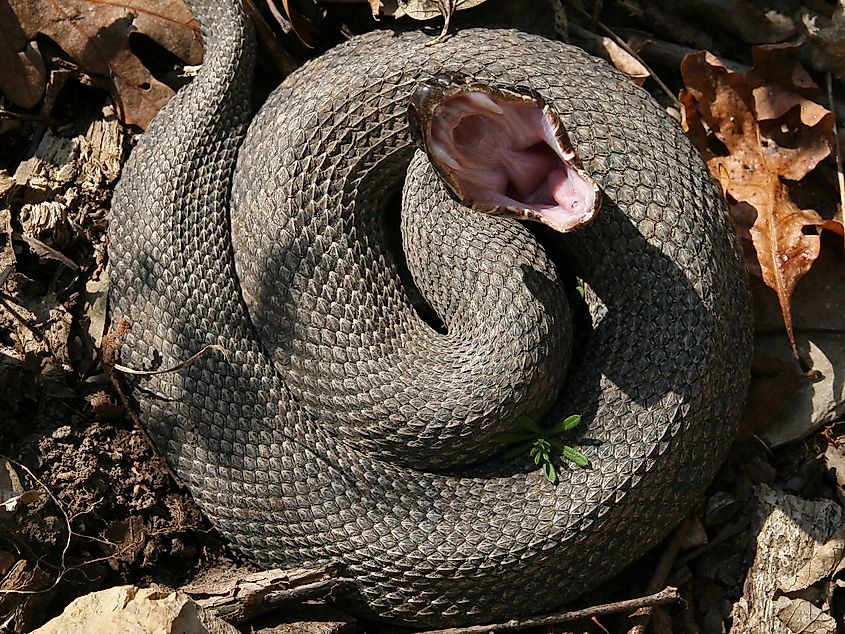
The western cottonmouth is the smallest snake out of the 3 subspecies of cottonmouths. These animals have thick bodies, with ridged scales and blocky heads. They often aren't that long, averaging around 2-4 feet. They are usually found near water sources, such as swamps, marshes, lakes, and rivers, and enjoy both land and water. Also known as water moccasins, these cottonmouths get their name from the white lining in their mouths when displaying their fangs.
Western cottonmouths typically give lots of warning before striking, unless they are suddenly startled. This can include shaking their tails, displaying their fangs, and releasing an unpleasant scent to deter predators. If these tactics don't work, the snake may strike, inflicting a bite that will instantly start to cause issues.
Their venom contains hemotoxin, which causes red blood cell death and an inability for proper blood clotting. This can lead to severe bleeding at the bite site. Other symptoms include immediate burning pain, rapid swelling, and numbness. other complications include breathing issues, heart rate changes, and tissue damage.
Western Diamondback Rattlesnake
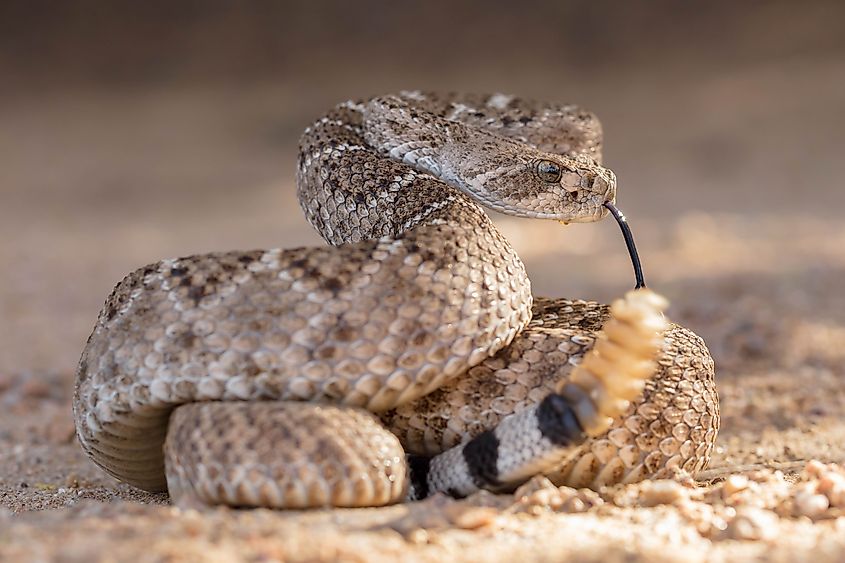
Rattlesnakes are often talked about in media and literature as being a threat to unsuspecting travelers and hikers, and they hold up to that reputation in real life. These snakes are known for their aggressive behavior, as they are quick to defend themselves and fight back, rather than retreat. They will coil up, show their fangs, and shake their tails, which is where their signature rattle comes into play. They will sometimes even strike before you have a chance to realize what is happening, which makes knowing what to do in this situation fantastic knowledge to have.
Known for their triangle-shaped heads, short tails, long bodies, and diamond-like patterns, these rattlesnakes can be found in brush, on rock ledges, river banks, and junk piles. If you unfortunately happen to stumble onto one of these creatures, immediately try to get out of range. If you are bitten, seek medical attention, as their bites are not something to be taken lightly.
Immediate symptoms include intense pain, swelling, bleeding, and blood clotting issues. Other symptoms include nausea, weakness, breathing issues, throat swelling, and necrosis. Do not try to suck out the venom yourself, and do not try to constrict the area with a tourniquet or other method, as this can lead to amputation and further complications.
American Alligator
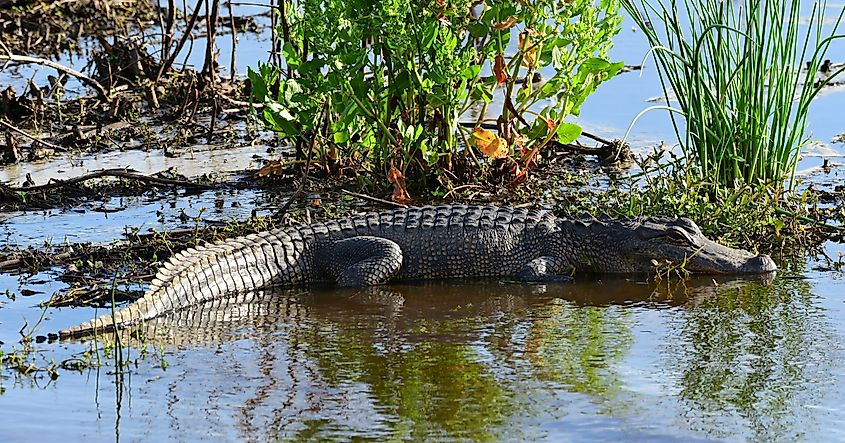
The American Alligator is an impressive animal and is found in freshwater, including swamps, lakes, and rivers. These creatures can grow to massive sizes, sometimes up to 12 feet, and weigh over 450kg. They are known for their rounded snouts, as well as their larger upper jaw, which completely covers the lower set of their teeth.
They are great swimmers and can take on the distance between them and their prey within seconds. They will often take their catch into deeper water, where they can gain more of an upper hand, as well as make it harder for the prey to be rescued.
It is important to always be aware of your surroundings when exploring near fresh bodies of water in Texas and to keep children and animals away from the shores. Alligators are carnivores and will attack unprovoked, giving you little time to react. Most instances of attacks come from unsuspecting swimmers, boaters, and those resting near the water.
Like sharks, the greatest risk from an alligator is amputation. When their powerful jaws lock onto their catch, it is extremely hard to remove yourself from their grasp, which can lead to lost limbs.
Mountain Lions (Cougars)
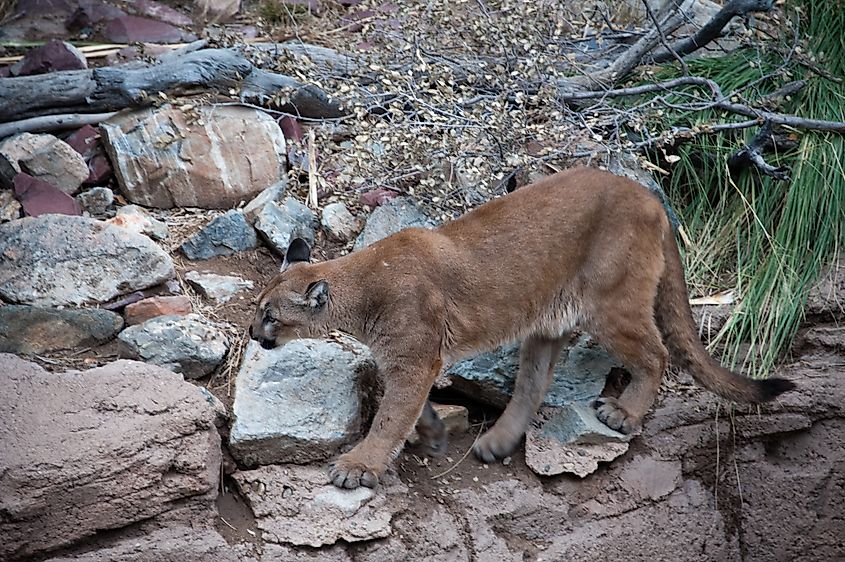
Cougars are more of a threat to outdoor cats, and small to medium-sized dogs, but can also see small children, and hikers, as either prey or a threat to their home.
These mammals are incredibly stealthy, and will usually know you're there before you know they are. They like to silently stalk their prey, or stay in hiding until it's time to strike. Thankfully, they are territorial and enjoy hunting alone, so you will only usually see one at a time unless they are with cubs.
The best way to avoid a cougar attack is to be aware of your surroundings and to always keep an eye on children and pets. Try to travel with someone else, and keep your campsite clear of things that can attract their usual prey. If you encounter a mountain lion, try to appear larger than you are, and make lots of noise. Never run, or come off as prey. Assert dominance however you can.
Scorpion
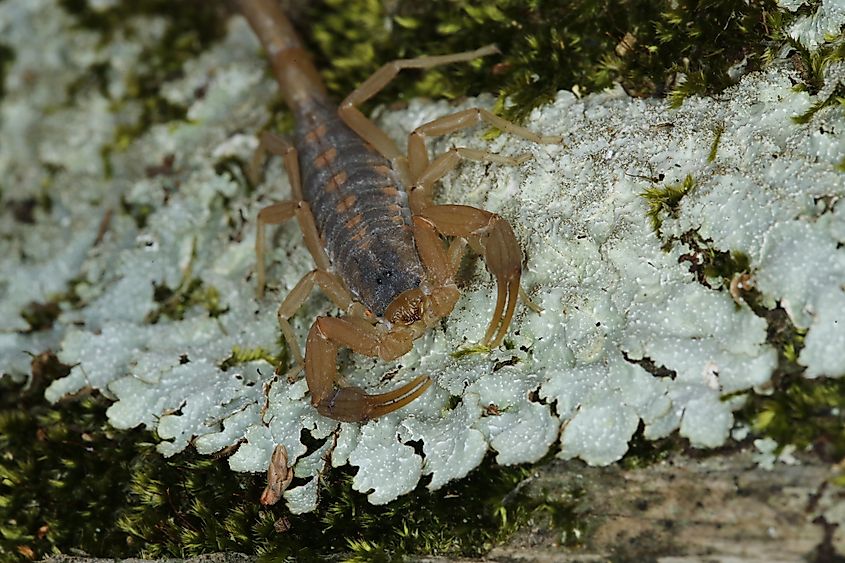
Scorpions can be found worldwide, and are known for their venomous stingers on their tails, and their front pinchers. They are mainly nocturnal, and average around 2.5 inches. They like to remain motionless while waiting on prey and hide beneath rocks, garbage, wood, and in cracks and burrows.
A sting from a scorpion is mostly a concern amongst children and immuno-complicated individuals, as well as pets. General symptoms include pain, which can be intense, numbness, tingling, swelling, and being warm to the touch. More serious symptoms include trouble breathing, sweating, vomiting, high blood pressure, fast heart rate, and slurred speech. Stings can also cause anaphylaxis if you happen to be allergic.
After being stung, you should immediately seek medical care just to be safe. You can avoid being stung by being mindful of your surroundings, clearing away possible hiding spots in on your property, and not hiking at night in places scorpions frequent.
Coral Snakes
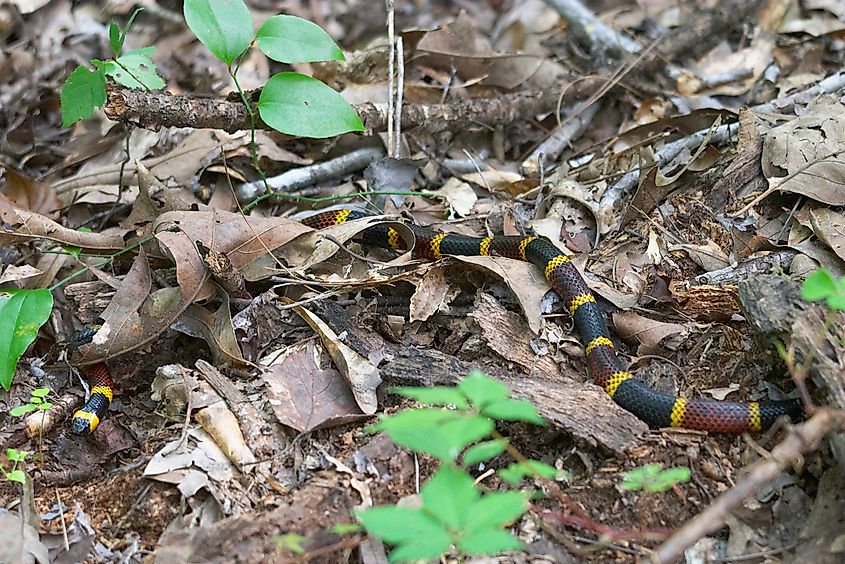
These snakes are identified by their red, yellow, and black bands of scales. They are often confused with other non-venomous snakes, and there are over 80 species of them. Coral snakes are very reclusive, and are often not seen by humans, as they avoid heavily populated areas, and are often hiding in either burrows or under leaves and other debris.
Thankfully, their fangs aren't the longest, which makes it harder for them to penetrate thick clothing and shoes. But if you are bitten, it is recommended you seek medical attention immediately. Symptoms can sometimes be delayed, but when they appear, can be serious. This includes muscle weakness, trouble speaking, swallowing, and breathing, paralysis, and respiratory arrest. The best cure for a coral snake bite is an administration of antivenom, the sooner the better.
Fire Ants
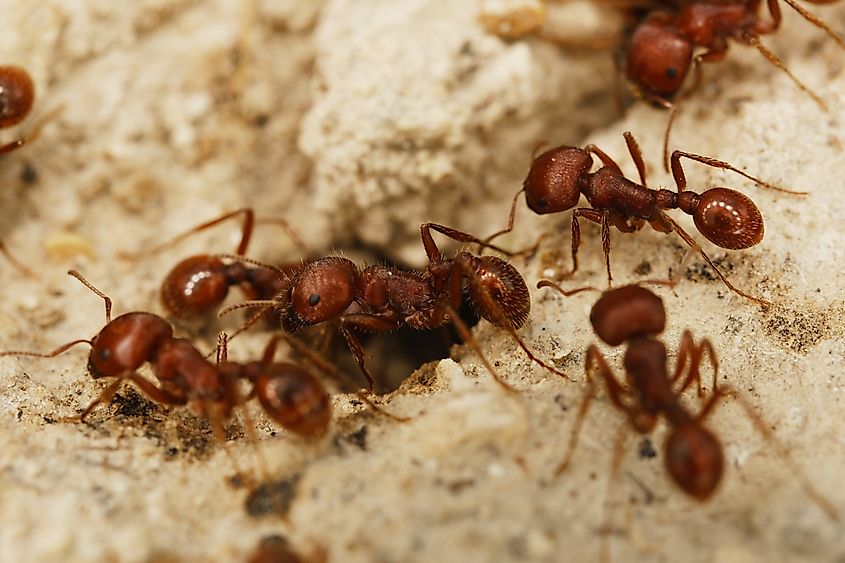
These little creatures are aggressive, and territorial, and travel in large groups. They create their nests under the ground, which makes them easy to step on and accidentally disturb. Once a threat has been established, they will swarm the target, repeatedly stinging. They will find exposed skin, and make it difficult to knock them off.
For most people, a single sting will only be an inconvenience. It can cause itchy welts, a burning sensation, and blistering. But if you are stung by many of them, which is often the case, things can take a turn. More serious reactions include cramping, nausea and vomiting, digestive issues, swollen tongue, and trouble breathing. If you happen to be allergic to fire ants, even one sting can cause anaphylaxis, a possibly deadly scenario. If you discover a fire ant nest on your property, it is best to have it exterminated as soon as possible.
Ticks
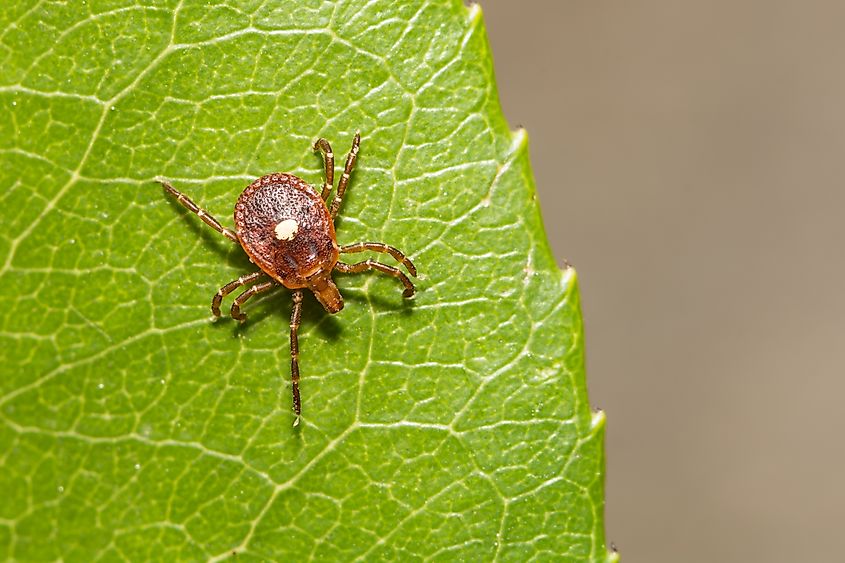
While ticks themselves aren't poisonous or venomous, the diseases they carry can be life-changing and threatening. Ticks are found in heavy brush, tall grass, and forested areas. They attach to the skin and feast on the blood of both animals and humans. It is essential to always check yourself and others for ticks after hiking or being around tick-infested areas. They often are hard to see, especially if they have attached to more hidden areas like the back of knees, armpits, and in the fur of pets.
If you find a tick, you should remove it as soon as possible. It is also recommended to save the tick for identification to better help evaluate the risks. Common symptoms of tick bites include rashes, fever, headaches, and muscle and joint pain, which can all be indicators of an infected tick bite.
Diseases carried by ticks include Powassan disease, which can cause fevers, seizures, confusion, and sometimes brain inflammation. Lyme disease is another complication that attacks your central nervous system. Tularemia leads to skin ulcers and swollen lymph nodes. Anaplasmosis can lead to kidney and respiratory failure. Rocky Mountain Spotted Fever can cause a rash, respiratory failure, necrosis, organ damage, and even comas.
Kissing Bugs
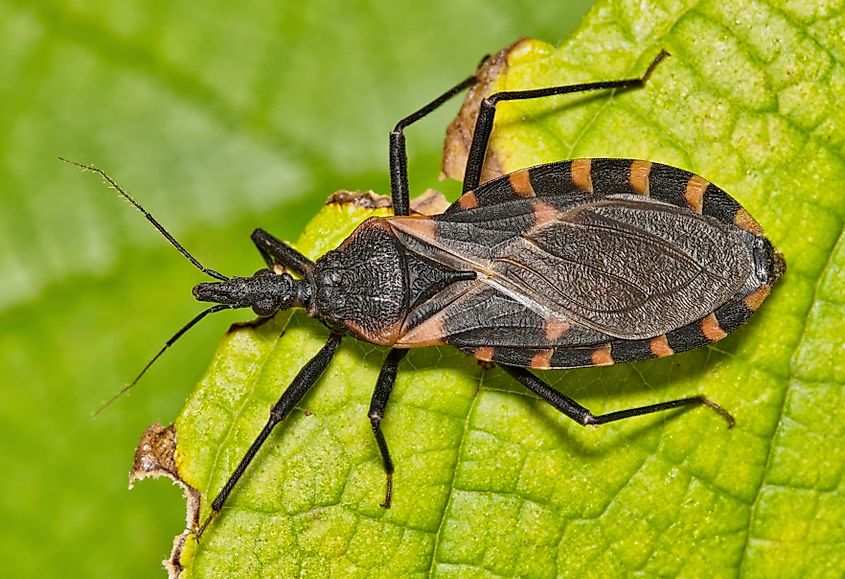
Kissing bugs, also called triatomine bugs, are found mostly in Central and South America, but have made their way into the Southern United States, especially in the states of Texas, Arizona, and New Mexico. They are blood-sucking bugs, and around half of them are found to be infected with the parasite Trypanosoma Cruzi.
These parasites are what lead to complications and sometimes death. Early symptoms include a fever, fatigue, swelling in the infected area, body aches, and liver enlargement. Left untreated, complications can lead to heart failure, cardiac arrest, enlarged colon, and enlarged esophagus.
Kissing bugs often infect humans by leaving their feces on uncooked food, or by transferring to humans via infected animals. To avoid coming into contact with these insects, make sure to wear insect repellent, and avoid contact with wildlife such as raccoons and possums.
While deaths by wild animals are rare in the United States and in Texas, they still happen. Whether it's by being ambushed by a larger creature, or by being infected with a disease the animal was carrying, complications can arise from coming into contact with any of these critters. So make sure to always be prepared, especially if you plan on hiking, doing yard work, or traveling to places these animals like to call home. Be alert, be smart, and always listen to local guidelines.











